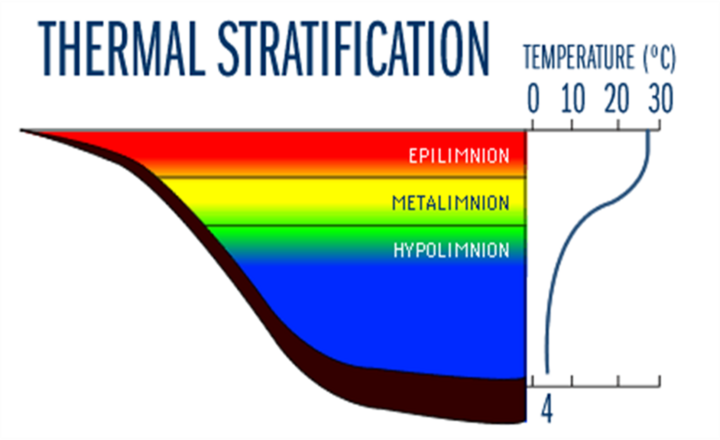Fall Turnover: A Physical Look at Lakes
In most of Nebraska, deep lakes will tend to stratify or form layers, especially during summer. This happens because the density of water changes as its temperature changes. During the summer, a temperature difference is established between the upper water and lower water in a lake. The upper layer of water, called the epilimnion, is warm. This layer is about as deep as the sun can penetrate. The deep layer of water, called the hypoliminion is made of cooler water. The hypolimnion is the zone of decomposition, where plant material either decays or sinks to the bottom and accumulates. Dissolved oxygen levels are often very low in this layer. The two layers are seperated by something called the thermocline. Its a small layer of water where the water temperature rapidly changes from warm to cold. The thermocline layer prevents mixing of the warm (epilimnion) and cold (hypolimnion) water.
In the fall, the surface waters cool until they are as dense as the bottom waters. With the help of the wind, the lake can mix and this is called "fall turnover."

What does fall turnover do to oxygen in the lake?
Oxygen from the surface mixes with the bottom. Nutrients and decomposing organic matter from the bottom is mixed up and throughout the lake. This is why some lakes will have an unpleasant smell in the fall. If the turnover happens too quickly, oxygen level can drop low enough to result in a fish kill.